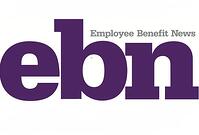 At a time when terms like “inflation,” “gas prices,” “recession,” and “volatility” dominate chatter about the U.S. economy, plan sponsors and recordkeepers are likely fielding questions and concerns from participants. Every dollar counts when saving for a financially secure retirement, especially with the present volatility in the financial markets. But while investment fund options, asset classes, and fees are important for helping participants weather inflation and save more, there is another way that sponsors and recordkeepers can help participants protect, and increase, their retirement savings in the New Year—facilitate portability.
At a time when terms like “inflation,” “gas prices,” “recession,” and “volatility” dominate chatter about the U.S. economy, plan sponsors and recordkeepers are likely fielding questions and concerns from participants. Every dollar counts when saving for a financially secure retirement, especially with the present volatility in the financial markets. But while investment fund options, asset classes, and fees are important for helping participants weather inflation and save more, there is another way that sponsors and recordkeepers can help participants protect, and increase, their retirement savings in the New Year—facilitate portability.
A Promising Outlook for Helping Participants Save More in 2023
Although DIY plan-to-plan portability is often time-consuming and expensive, creating a barrier to retaining savings, a recent game-changing development in the retirement services industry has made it possible for small-balance participants to benefit from the automated transfer of their 401(k) balances from their previous employers to their new employers—providing a solution to the hassle of doing a DIY transfer.
In October 2022, some of the largest plan recordkeepers came together to establish an industry consortium for building a digital “portability network” connecting recordkeepers and their plan sponsor clients across the country. All plan recordkeepers, regardless of size, can participate in the network, which will enable them to utilize Retirement Clearinghouse’s auto portability service to streamline the transfer of accounts under $5,000 between qualified plans for participants when they change jobs.
This independent entity, Portability Services Network, LLC, functions as an industry utility for providing auto portability services at the lowest reasonable cost to plan participants. The recordkeepers who are members of the utility receive no compensation from auto portability transactions—and the utility will eventually be able to self-finance the development of future operational efficiencies, and pass those cost savings on to participants.
Why Portability Matters
The historical lack of seamless plan-to-plan savings portability at the point of a job-change has led too many participants to view cashing out their retirement accounts as the easiest option when they switch employers. Approximately $92 billion in savings leaks out of the U.S. retirement system every year because American workers who change jobs prematurely cash out their retirement savings accounts, and pay taxes and penalties on premature withdrawals, according to Employee Benefit Research Institute (EBRI) data.
Meanwhile, data available from the largest plan recordkeepers indicates that 31% of plan participants who change jobs will cash out their 401(k) savings in their prior-employer plans within a year of switching employers. Furthermore, this rate of cashing out is higher for minorities (63% for Black Americans, and 57% for Latinos), those who earn annual income of between $20,000 and $30,000 (50%), and women (41%).
A Bright Future for Participant Savings
The launch of the Portability Services Network is a transformative moment for our industry, with key players in the recordkeeping arena collaborating for the first time to address a problem in the defined contribution system. EBRI estimates that, if auto portability is broadly adopted across the U.S. over the course of 40 years, an additional $1.5 trillion in savings will be preserved in our nation’s retirement system, including:
- $619 billion in extra savings for 67 million Black and minority workers
- $365 billion in additional savings for 42 million women participants of all ethnicities
Even a single cash-out during a participant’s working life can reduce their income in retirement. Our research at Retirement Clearinghouse demonstrates that a hypothetical 30-year-old participant who cashes out a $5,000 401(k) savings account balance today would forfeit as much as $52,000 in earnings the account would have accrued for them by age 65, if we assume the account would have experienced growth of 7% per annum.
Harnessing the benefits of auto portability can help participants save more for retirement, regardless of market conditions. And adopting solutions that discourage the cash-outs of small-balance accounts, more than anything else, can provide an underserved segment of American retirement-savers with improved retirement-savings outcomes.
As we look ahead to the New Year, plan sponsors can resolve to help their participants increase their retirement savings—and increase key metrics such as average account balance—by adopting auto portability.
